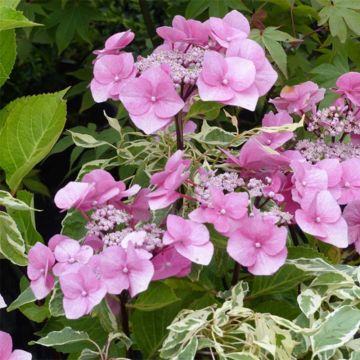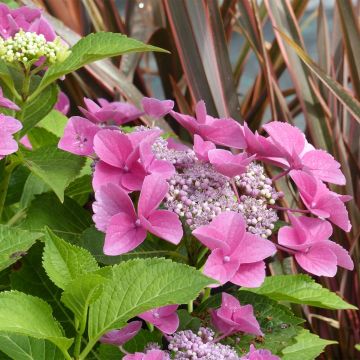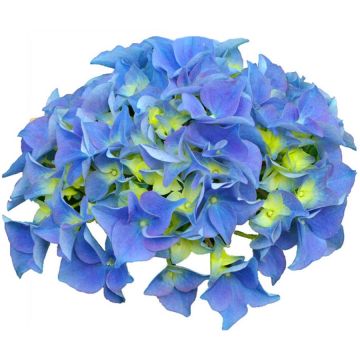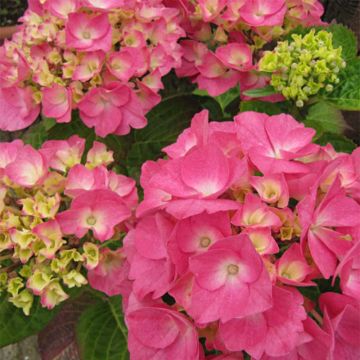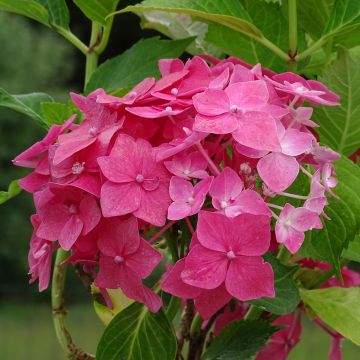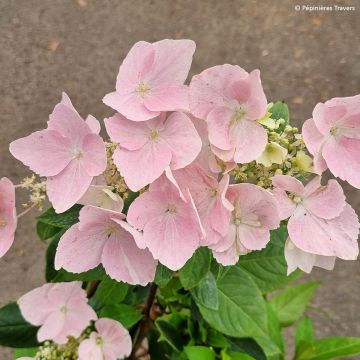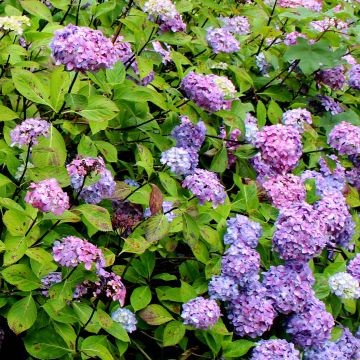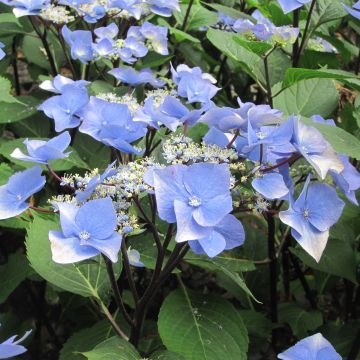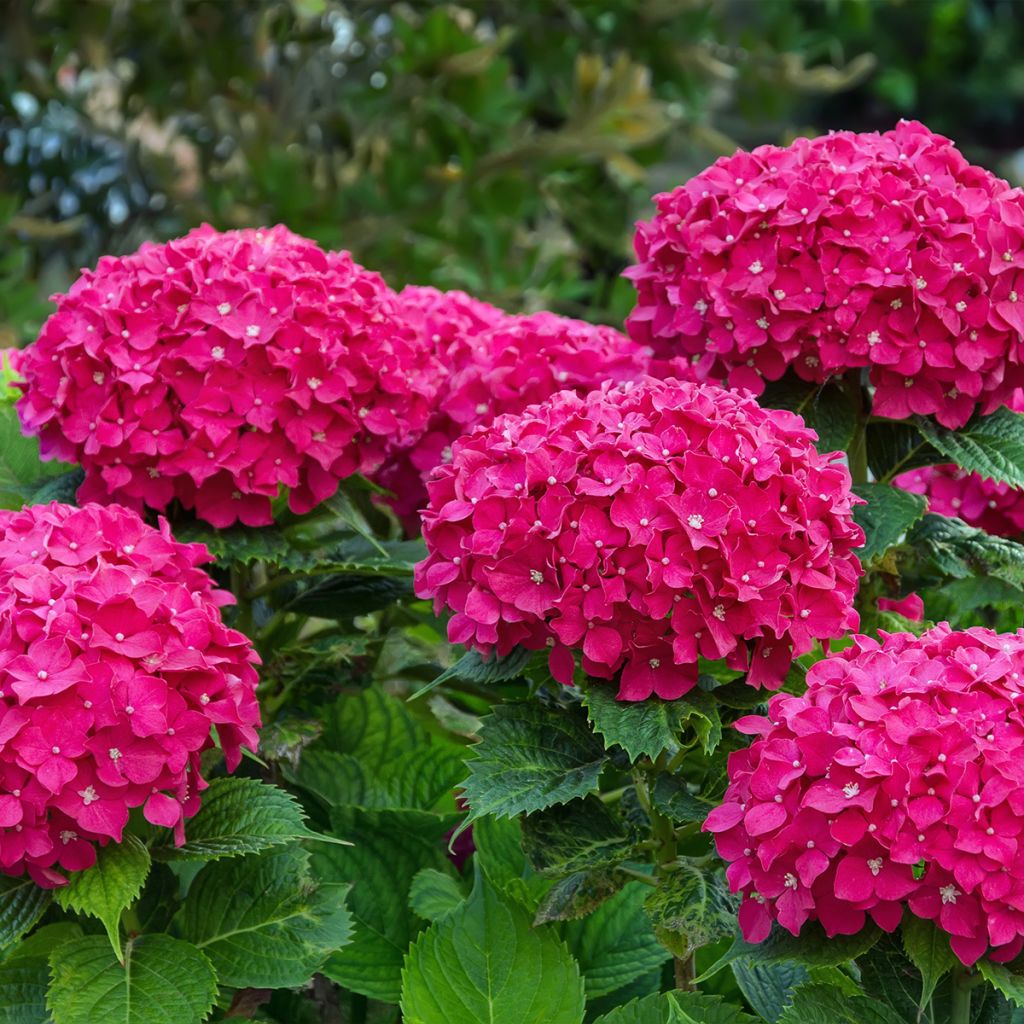

Hydrangea macrophylla Eughen Hahn
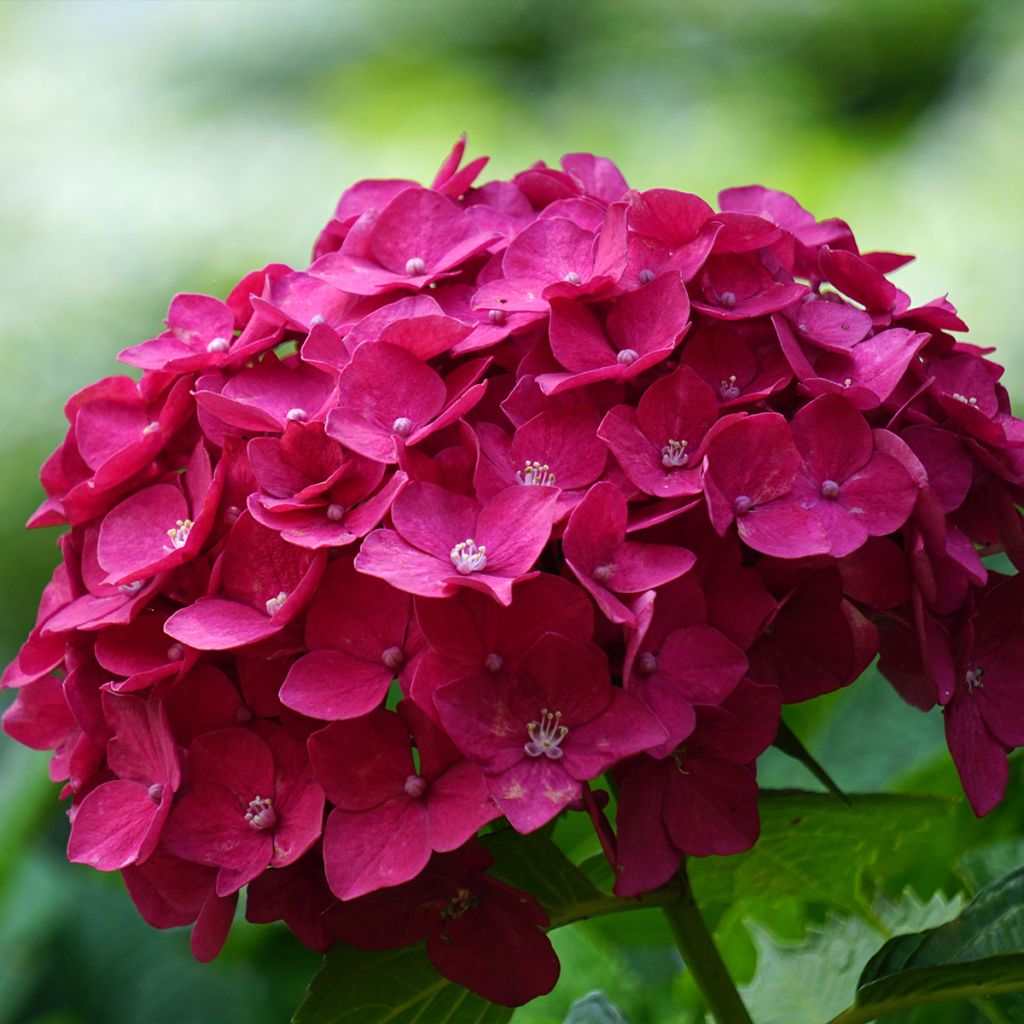

Hydrangea macrophylla Eughen Hahn
Hydrangea macrophylla Eughen Hahn
Hydrangea macrophylla Eughen Hahn
Bigleaf Hydrangea, French Hydrangea
This item cannot be shipped to the selected country
Delivery charge from €5.90
Delivery charge from €5.90
More information
Schedule delivery date,
and select date in basket
This plant carries a 24 months recovery warranty
More information
We guarantee the quality of our plants for a full growing cycle, and will replace at our expense any plant that fails to recover under normal climatic and planting conditions.
From €5.90 for pickup delivery and €6.90 for home delivery
Express home delivery from €8.90.
From €5.90 for pickup delivery and €6.90 for home delivery
Express home delivery from €8.90.
Does this plant fit my garden?
Set up your Plantfit profile →
Description
The Hydrangea macrophylla 'Eughen Hahn' is a superb variety of Hydrangea with a compact habit and abundant flowering. It produces round inflorescences in red colour for a good part of the summer. This bush forms a dense clump of about 1 meter (3 feet 4 inches) in diameter, with slightly glossy green leaves and slightly wavy. Hardy, this Hydrangea should be placed in a shaded position, in neutral to acid soil. It is easy to grow, requiring only annual pruning in spring and watering in summer to keep the soil moist at its base.
The Hydrangea macrophylla is a deciduous bush, native to Japan, where its beauty has been appreciated for centuries and mentioned in poems dating back to the 8th century! In this country that attaches great importance to plants, festivals are even dedicated to this bush. This variety 'Eughen Hahn' is a creation of August Steiniger, renowned in the world of Hydrangeas.
In summer, it flowers for about 6 weeks, between July and September, producing an abundance of inflorescences measuring 12 to 15 cm (4.7 to 5.9 in) in diameter. These vermillion red balls are composed of numerous double florets, tightly packed together. The ball-shaped habit and the shiny green leaves enhance the abundant flowering that covers the bush, making it an attractive visual point in the garden.
A small-sized bush, about 1 meter (3 feet 4 inches) in all directions, this Hydrangea, like all H. macrophylla, is not a strictly heathland plant, but prefers neutral to acidic soils. A semi-shaded to shaded position in a warm climate will suit it well, as well as watering in summer because it does not tolerate drought (from the soil and atmospheric) which can cause its leaves to wilt. Care consists of annual pruning in spring, before the new leaves emerge. This bush with its long summer flowering is very hardy (-20°C (-4 °F) or more, although severe frosts may damage the ends of the branches, they easily regrow after spring pruning. Easy to grow, it can live for a very long time.
The Hydrangea 'Eughen Hahn' is a little gem that can be grown in a container. In this case, a location rather exposed to the east, with a few hours of morning sun but shade in the afternoon, should be chosen. Use slightly acidic potting soil (pH around 6) and apply some organic fertilizer in spring, with a high potassium content to promote flowering. Monitor watering as soon as temperatures rise to avoid drying out the substrate.
This bush will also be perfect when planted in flower beds, where it will have a great effect in combination with other flowering shrubs that prefer non-limestone soils. Choose plants with staggered flowering throughout the year to frame the flowering of this Hydrangea. For the beginning of the year, the excellent Hamamelis 'Diane' will brighten up the short February days with its spider-shaped red flowers. In spring, nothing beats a beautiful variety of Camellia like 'Sweet Olive' with its overlapping flowers in shades of pink to white in March-April, followed in May-June by a Kalmia, or mountain laurel, among the many available varieties. And to end the year beautifully, a Camellia sasanqua with its fully open petals and bright yellow stamens will be perfect.
Report an error about the product description
Hydrangea macrophylla Eughen Hahn in pictures
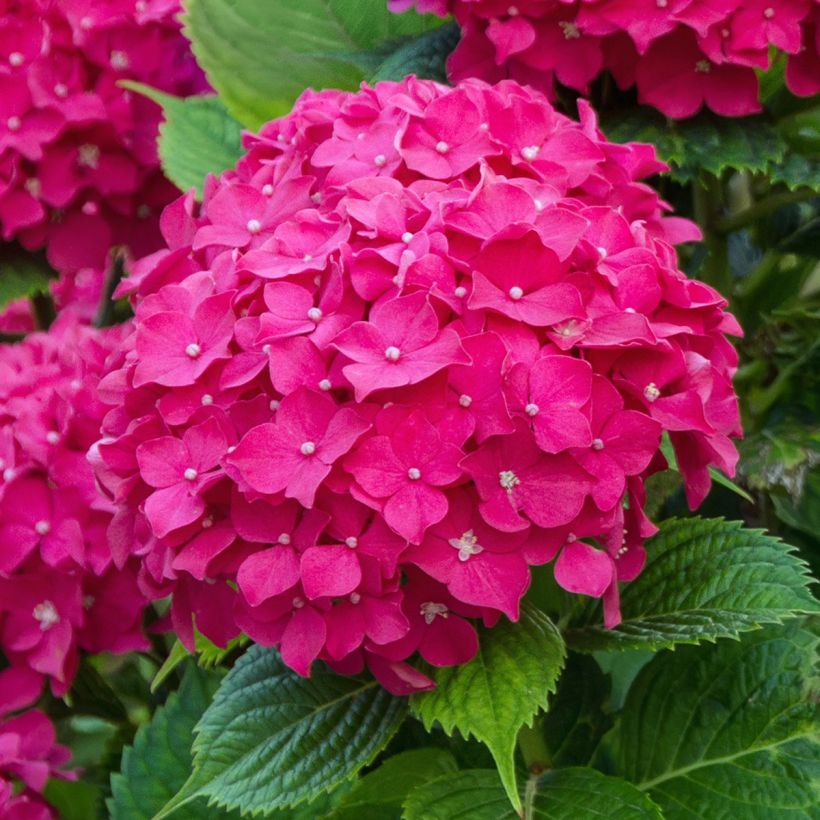

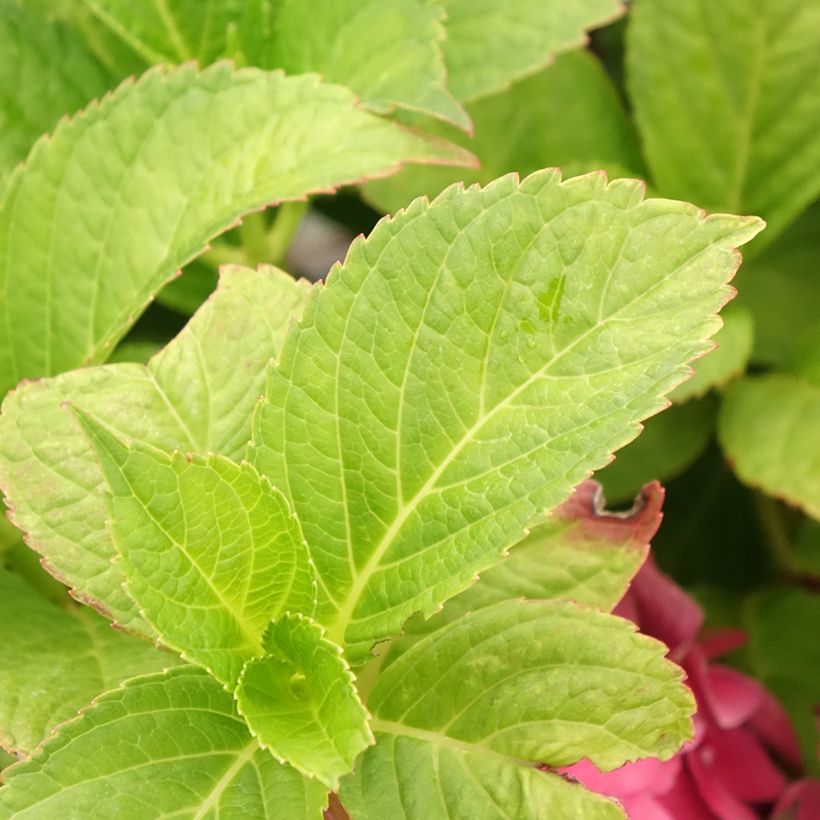

Plant habit
Flowering
Foliage
Botanical data
Hydrangea
macrophylla
Eughen Hahn
Hydrangeaceae
Bigleaf Hydrangea, French Hydrangea
Cultivar or hybrid
Other Hydrangea Macrophylla
Planting and care
Plant the compound hydrangea macrophylla Eughen Hahn in spring or early autumn, preferably in a slightly shaded location, for example against an east-facing wall or even to the north. In very cold regions, it may be prudent to protect its stump with a thick mulch. Keep it sheltered from cold and drying winds. It does not necessarily require heather soil, but appreciates a deep, cool, well-drained, and fairly fertile soil. In poor soil, enrich with a good base fertilizer before planting, and mix the existing soil with a substrate containing some compost.
If the soil is dry at the base of the wall, place the root ball at least 30-40 cm (11.8-15.7 in) away from the wall base and incorporate a quantity of well-decomposed compost to better retain moisture in the soil. After planting, be careful of slugs, which are quite fond of young leaves. Very hardy, it is not afraid to be planted in cold regions. Water regularly during hot periods to prevent the foliage from wilting during dry spells.
Planting period
Intended location
Care
-
, onOrder confirmed
Reply from on Promesse de fleurs
Haven't found what you were looking for?
Hardiness is the lowest winter temperature a plant can endure without suffering serious damage or even dying. However, hardiness is affected by location (a sheltered area, such as a patio), protection (winter cover) and soil type (hardiness is improved by well-drained soil).

Photo Sharing Terms & Conditions
In order to encourage gardeners to interact and share their experiences, Promesse de fleurs offers various media enabling content to be uploaded onto its Site - in particular via the ‘Photo sharing’ module.
The User agrees to refrain from:
- Posting any content that is illegal, prejudicial, insulting, racist, inciteful to hatred, revisionist, contrary to public decency, that infringes on privacy or on the privacy rights of third parties, in particular the publicity rights of persons and goods, intellectual property rights, or the right to privacy.
- Submitting content on behalf of a third party;
- Impersonate the identity of a third party and/or publish any personal information about a third party;
In general, the User undertakes to refrain from any unethical behaviour.
All Content (in particular text, comments, files, images, photos, videos, creative works, etc.), which may be subject to property or intellectual property rights, image or other private rights, shall remain the property of the User, subject to the limited rights granted by the terms of the licence granted by Promesse de fleurs as stated below. Users are at liberty to publish or not to publish such Content on the Site, notably via the ‘Photo Sharing’ facility, and accept that this Content shall be made public and freely accessible, notably on the Internet.
Users further acknowledge, undertake to have ,and guarantee that they hold all necessary rights and permissions to publish such material on the Site, in particular with regard to the legislation in force pertaining to any privacy, property, intellectual property, image, or contractual rights, or rights of any other nature. By publishing such Content on the Site, Users acknowledge accepting full liability as publishers of the Content within the meaning of the law, and grant Promesse de fleurs, free of charge, an inclusive, worldwide licence for the said Content for the entire duration of its publication, including all reproduction, representation, up/downloading, displaying, performing, transmission, and storage rights.
Users also grant permission for their name to be linked to the Content and accept that this link may not always be made available.
By engaging in posting material, Users consent to their Content becoming automatically accessible on the Internet, in particular on other sites and/or blogs and/or web pages of the Promesse de fleurs site, including in particular social pages and the Promesse de fleurs catalogue.
Users may secure the removal of entrusted content free of charge by issuing a simple request via our contact form.
The flowering period indicated on our website applies to countries and regions located in USDA zone 8 (France, the United Kingdom, Ireland, the Netherlands, etc.)
It will vary according to where you live:
- In zones 9 to 10 (Italy, Spain, Greece, etc.), flowering will occur about 2 to 4 weeks earlier.
- In zones 6 to 7 (Germany, Poland, Slovenia, and lower mountainous regions), flowering will be delayed by 2 to 3 weeks.
- In zone 5 (Central Europe, Scandinavia), blooming will be delayed by 3 to 5 weeks.
In temperate climates, pruning of spring-flowering shrubs (forsythia, spireas, etc.) should be done just after flowering.
Pruning of summer-flowering shrubs (Indian Lilac, Perovskia, etc.) can be done in winter or spring.
In cold regions as well as with frost-sensitive plants, avoid pruning too early when severe frosts may still occur.
The planting period indicated on our website applies to countries and regions located in USDA zone 8 (France, United Kingdom, Ireland, Netherlands).
It will vary according to where you live:
- In Mediterranean zones (Marseille, Madrid, Milan, etc.), autumn and winter are the best planting periods.
- In continental zones (Strasbourg, Munich, Vienna, etc.), delay planting by 2 to 3 weeks in spring and bring it forward by 2 to 4 weeks in autumn.
- In mountainous regions (the Alps, Pyrenees, Carpathians, etc.), it is best to plant in late spring (May-June) or late summer (August-September).
The harvesting period indicated on our website applies to countries and regions in USDA zone 8 (France, England, Ireland, the Netherlands).
In colder areas (Scandinavia, Poland, Austria...) fruit and vegetable harvests are likely to be delayed by 3-4 weeks.
In warmer areas (Italy, Spain, Greece, etc.), harvesting will probably take place earlier, depending on weather conditions.
The sowing periods indicated on our website apply to countries and regions within USDA Zone 8 (France, UK, Ireland, Netherlands).
In colder areas (Scandinavia, Poland, Austria...), delay any outdoor sowing by 3-4 weeks, or sow under glass.
In warmer climes (Italy, Spain, Greece, etc.), bring outdoor sowing forward by a few weeks.


































